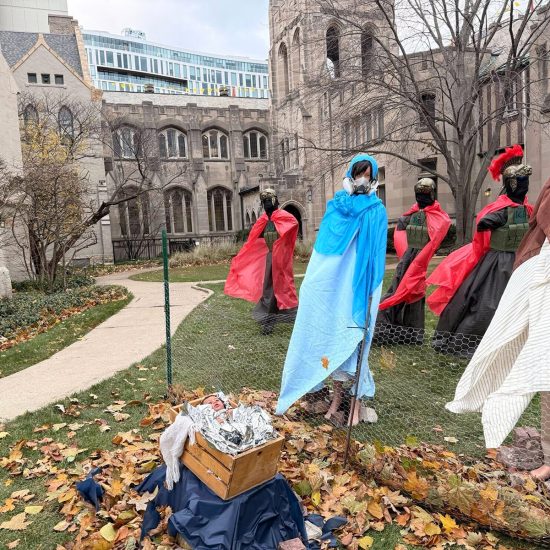

THE GOSPEL ACCORDING TO JAMES BALDWIN: What America’s Great Prophet Can Teach Us About Life, Love, and Identity. By Greg Garrett. Maryknoll, NY: Orbis Books, 2023. 184 pages.
There are times when a book emerges that offers a necessary word to our society/culture. This is especially true at moments when we need reminding that racism is still an ever-present problem in our context. While some of us thought that the election of Barack Obama might usher in a new age, where race would not be a central concern, we were wrong. Instead of entering a post-racial world, we entered an age of racial angst and unrest when the tables in many cases have been turned, such that it is common to hear white folks call people of color racists. Yes, we live at a time when many white Americans feel persecuted and put upon, and they’re not backing down. So, it’s at moments like this that we need to hear voices that speak the truth, even if it makes us uncomfortable. Some of those voices no longer walk in our midst, but they have left testimony that needs to be heard. Among those figures of the recent past who have spoken the truth is James Baldwin, an African-American author/essayist and activist.

Robert D. Cornwall
We can read for ourselves the works of James Baldwin. In fact, we should read his works. I’ve only read a few of his books, including his collection of essays, The Fire Next Time, and his first novel, Go Tell It on the Mountain. Reading Greg Garrett’s The Gospel According to James Baldwin has convinced me to dive deeper into Baldwin’s works. In many ways, in my role as a reviewer, having only read The Fire Next Time before picking up Garrett’s The Gospel According to James Baldwin served as an introduction to Baldwin’s life and message. Thus, I have more reading ahead. While Baldwin was by no means a traditional Christian his message speaks to the heart of the Gospel, one that calls for justice and mercy.
Garrett is the Carole McDaniel Hanks Professor of Literature and Culture at Baylor University. He is also a visiting fellow at Oxford University’s Centre for Religion and Culture and serves as Canon Theologian at the American Cathedral of the Holy Trinity in Paris. It is in the context of his vocation that Garrett has spent much time studying and teaching the life and literature of James Baldwin.
Garrett begins and ends his book by engaging in a pilgrimage that allows him to experience the footsteps of James Baldwin. As an author, Garrett is white, straight, and relatively orthodox in his Christian theology. Baldwin was Black, Gay, and not traditional, though he grew up with a stepfather who was a preacher and spent some time as a teen preaching in Black churches. So, Baldwin knew the Christian message and, in many ways, lived it better than most. Although one of the country’s most important authors, it would not surprise me to see his works banned from school libraries because they did not fall in line with current trends. However, as Garrett notes, based on teaching Baldwin to his Baylor students, “We experience an enlargement of what it means to be human in Baldwin’s presence, gain burgeoning insights into why we might be here, what we are made for, how transcendence feels, what beauty is, how we’re meant to live with each other, how are called to love each other and to be responsible for each other” (p. 5). Such is the Gospel according to James Baldwin.
To read The Gospel According to James Baldwin in essence takes us on a pilgrimage through Baldwin’s life and work. After couching what is to come in terms of a pilgrimage, in the second chapter of the book Garrett introduces us to “The Life of James Baldwin.” According to Garrett, Baldwin was born in Harlem in 1924, the grandson of a slave, and never knew his biological father. Garrett points out that Baldwin “knew from an early age that he was Black and that he was smart, and that if he was going to escape the crippling poverty and his family endured, …it was going to have to be through that intelligence.” (p. 11). While he never pursued education beyond high school, he became one of America’s great intellectuals. That intellect was on full display when he held his own in a debate with the Yale-educated conservative and founder of the National Review, William F. Buckley. His writing talent was recognized early and nurtured by one of his teachers. As he moved into adulthood, he began his writing career, publishing essays in major magazines. Nonetheless, he came to believe that if he stayed in the US he would end up on a path to self-destruction, so he boarded a ship to France, where he lived as an expatriate in Paris. It was there that while he struggled financially, he met a young Swiss artist who was the love of his life. It was while living in Switzerland that he finished his first novel Go Tell It on the Mountain (1953), a book that made his name. Garrett takes us from there through Baldwin’s life, lifting up his written work and experiences of life, much of which was spent in the south of France. But his spirit still lives, and his voice still speaks.
In a chapter titled “Baldwin as Prophet of Humanity,” Garrett reveals Baldwin’s own sense of purpose. That was to be a prophet in line with Jeremiah. In this role, he sought to call people to account on matters of race and justice, identity, and culture. He claimed that it was because of his love of America that he felt called to engage in perpetual criticism of the nation by reminding white Americans of their delusions of innocence (such sentiment might not sit well with many white Americans today). As a prophet, Baldwin also spoke to matters of culture. Garrett writes that “For Baldwin, art, literature, and culture are central ways we understand ourselves and the world we occupy, and so he held his roles as artist and critic to be sacred” (p. 28). He believed that good art enlarges us while bad art puts us in cages. Thus, he could be highly critical of art and literature that he felt did not enlarge. He was concerned when art, literature, and film glossed over hard truths, wanting them to depict society critically and honestly. That’s what he sought to do as he addressed matters of race, faith, and identity.
The title of the book speaks of the Gospel, and so we might expect some words on matters of faith. Garett doesn’t disappoint us as he offers a chapter titled “Baldwin on Faith.” According to Garrett, this former teen preacher might leave the church behind as an adult, but he speaks in his works to matters of faith and uses the “language of church, the Bible, and theology” in his works. Among the works I wish were available is an unfinished play titled “Welcome Table,” which speaks to matters I’m concerned about (an open eucharistic table). Perhaps we can learn something from his separation from institutionalized Christianity, as he bore witness to the failings of both white and black churches. Garrett points out that “To the end of his life, Baldwin spoke of the concept of the welcome table, a place where this brotherhood and sisterhood, this kind of live, this kind of unity might be possible” (p. 79).
As one might expect, Baldwin devoted much of his life and work, his literature and his activism, to matters of race. He experienced the full impact of racism and addressed it, even as the Civil Rights Movement was fully underway. He reminds us that racism has been with us as a nation from the beginning, and unfortunately, it continues to be with us long after his death. Nevertheless, Baldwin helps us wrestle with this stain on our society. Baldwin believed, rightly so, that race is a social construct that has been erected by white folks to subjugate Black people and other people of color. This construct has damaged both Black and White. One of the stories Garrett tells involves a meeting in 1963 that Baldwin helped set up with Bobby Kennedy, who was, at the time, still the Attorney General, with a set of influential African Americans. What we see here is that Kennedy called the meeting in many ways to let this group of African-American thought leaders know how much he and the administration had done and was taken aback when his conversation partners challenged him. It serves as a reminder of how well-meaning white people fail to truly understand the realities experienced by people of color. Despite everything he experienced he remained optimistic about the future. Unfortunately, that optimism has suffered from a racist backlash that has taken place in recent years. Nevertheless, he offers a witness that addresses where we fall short. Related to matters of race, Garrett takes us to a discussion of “Baldwin on Justice.” Here we discover that Baldwin spoke not only to race but to other matters of injustice, including poverty and incarceration. He invites us to speak out.
Besides writing about faith, race, and justice, Baldwin also addressed questions of identity. Garrett points out that if we examine closely the titles of many of Baldwin’s works, we will discover they speak to a lack of knowing and being known. When it came to identity, when being interviewed, Baldwin often resisted defining himself. According to Garrett’s analysis, in Baldwin’s mind, there will come a day “when we reach that New Jerusalem, when we all sit at the Welcome Table, there will be no need for names, labels, distinctions, or identities that divide or group us. Not the ones imposed on us by others, nor the ones we chose to use to define ourselves” (p. 143). Of course, we’re not there yet, so the question of identity continues to be a matter of concern for Baldwin and us. Therefore, as we examine his works, including his final unfinished play “The Welcome Table,” we discern Baldwin’s desire for us to reject the status quo and “work toward a future where hatred and prejudice will, always, be overwhelmed by love” (p. 160). That is Gospel.
Garrett closes The Gospel According to James Baldwin, where he began. That would be on pilgrimage. His pilgrimage with Baldwin takes him to Leukerbad in the Swiss Alps. It is there, where Baldwin went early in life, that Garrett decided to set aside for the moment the book I’m reviewing and finished a novel he had been working on for six years. It was there in Leukerbad that Baldwin put the finishing touches on his first novel, Go Tell It on the Mountain. Thus, he returns to this important place in Baldwin’s life to reflect on Baldwin’s influence on his own life and work. While Baldwin might be an unlikely saint, Garrett believes that is exactly what he is. As he writes: “Saints are not saints because they’re picture-perfect. They’re saints because they show up and put their hands in the real and get them dirty. And they’re saints because they inspire us.” (p. 164). This is what Garrett believes St. James Baldwin does in his life and his works. With that, Greg Garrett invites us to explore the Gospel that James Baldwin revealed in his life and works even if he might be an unlikely saint.
You can learn more about this book by listening to an interview with Greg Garrett on our Dangerous Dogma podcast:
This review originally appeared on BobCornwall.com.
Robert D. Cornwall is an ordained minister in the Christian Church (Disciples of Christ). Now retired from his ministry at Central Woodward Christian Church (Disciples of Christ) of Troy, Michigan, he serves as Minister-at-Large in Troy. He holds a Ph.D. in Historical Theology from Fuller Theological Seminary and is the author of numerous books including his latest “Second Thoughts about the Second Coming: Understanding the End Times, Our Future, and Christian Hope” coauthored with Ronald J. Allen. His blog Ponderings on a Faith Journey can be found at www.bobcornwall.com.






